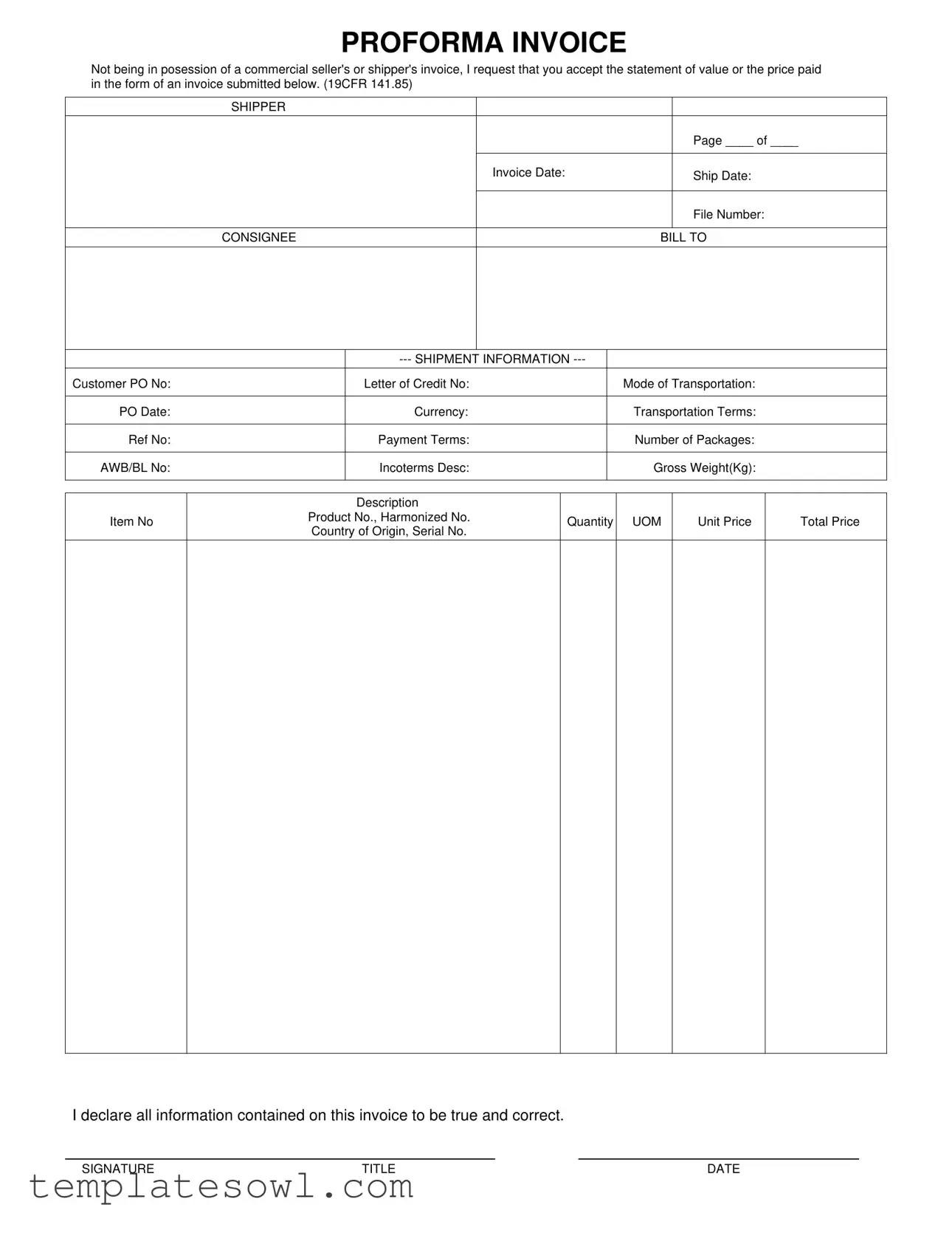What is a Pro Invoice form?
A Pro Invoice form is a preliminary invoice used when a seller does not possess a traditional commercial invoice. This document typically states the value of goods or the price paid for them. It helps facilitate shipping and customs processes, especially for international transactions.
When should I use a Pro Invoice?
You should use a Pro Invoice when you are shipping goods without a standard commercial invoice. This might occur if you are sending samples, goods for exhibitions, or if you’re working with a new supplier who hasn’t provided a formal invoice yet.
What information do I need to complete on a Pro Invoice?
Gather key details before filling out the form. You’ll need information about the shipper and consignee, shipment details, item descriptions, quantities, unit prices, and total costs. Be sure to accurately declare the values to prevent customs issues.
Is there a specific format I must follow?
While there's no strict format, the Pro Invoice should be clear and contain all required fields. Ensure that all necessary information is presented logically and straightforwardly to avoid confusion during the shipping process.
Do I need to sign the Pro Invoice?
Yes, signing the Pro Invoice is crucial. By signing, you declare all information provided is true and correct. This signature often carries significant weight in legal and customs proceedings.
Can I use a Pro Invoice to replace a commercial invoice?
No, a Pro Invoice is not a replacement for a commercial invoice. It serves a different purpose and is typically used for specific situations where a commercial invoice is unavailable.
How do I handle corrections on a Pro Invoice?
If you need to make corrections on the Pro Invoice, cross out the errors and provide the correct information nearby. Ensure that the corrections are clear. You should also initial any changes to confirm their accuracy.
Do I need to submit a Pro Invoice for customs?
Yes, submitting a Pro Invoice is often necessary for customs clearance if a commercial invoice is not available. Customs officials use it to assess duties and ensure compliance with relevant regulations.
Where can I find a template for a Pro Invoice?
You can find Pro Invoice templates online through various legal form websites or business resources. It's helpful to choose one that meets your specific needs and complies with your local regulations.


